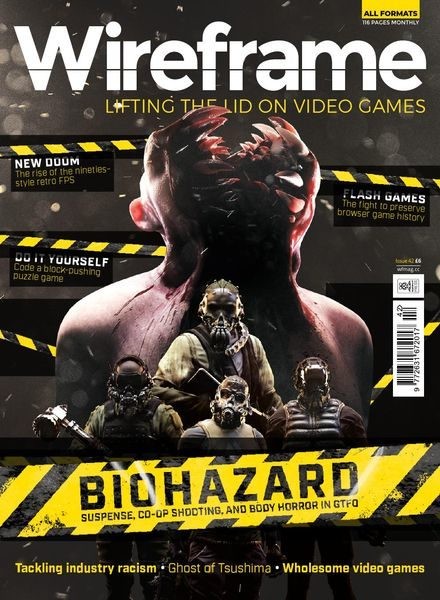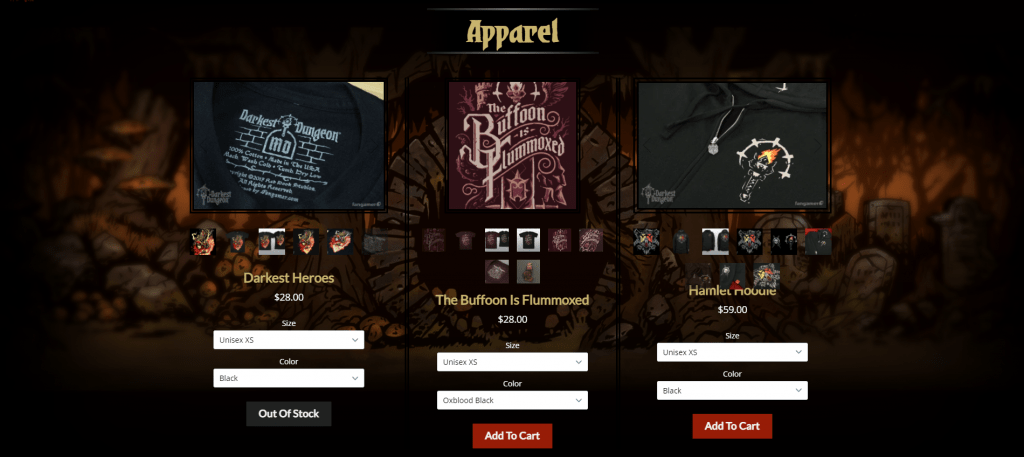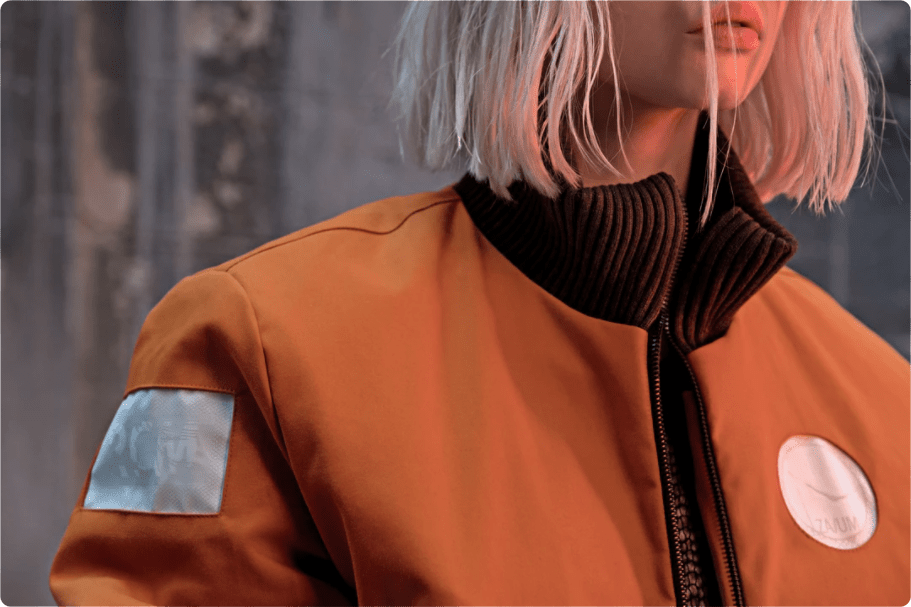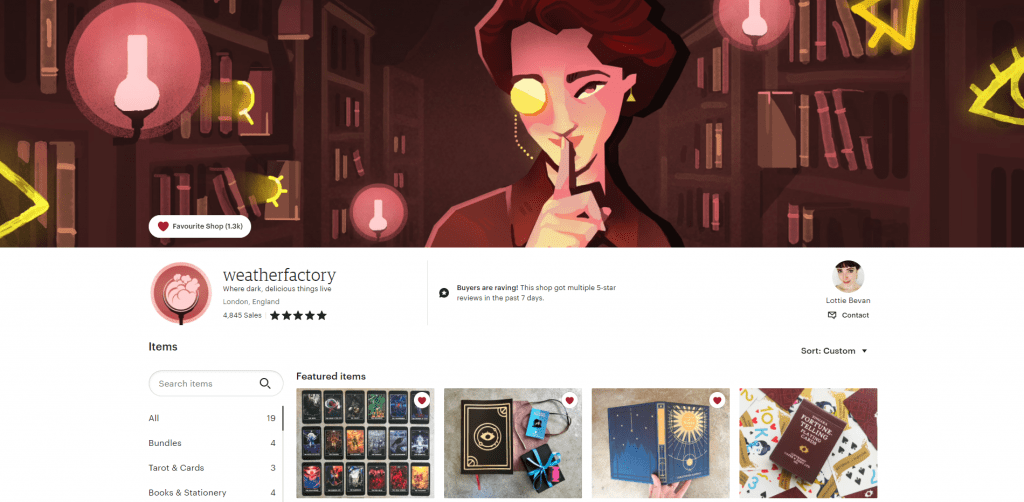
The Church of Merch
I wrote the article below for Wireframe, a British game dev magazine which ‘lifts the lid on video games’. And, inexplicably, lets me have a monthly column.
Imagine a dystopian future where big corporations sue other big corporations over mobile games, where everyone and their mum is making a PC game, and where eSports makes more money than any of us despite nobody really knowing what it’s for. You’re a small indie dev stuck in the middle of all this. How can you stand out and get noticed, in this picaresque world?
One way is to offer people something they can’t get elsewhere: top-notch merchandise. Indie merch is a blue ocean – most devs don’t bother with it unless they hit a certain milestone of success (think Darkest Dungeon or FTL). But it can make significant money – we usually make £2-4k profit each month from our our shop. It opens doors to other opportunities like attractive giveaways, and it diversifies your revenue streams so you’re not entirely dependent on the whims of store algorithms, influencers or press. In all, we’ve made around £75k profit from merch – this couldn’t sustain our studio like digital game sales do, but it’s very helpful as a side-gig!


Your first decision is what sort of shop you want. This’ll depend on your interests, skills and financial situation. Do you want a dedicated website? An integrated shop page on your studio’s site? Or would you like to be part of a larger outlet, alongside other games? A dedicated website requires the most technical set-up and makes you responsible for all the stock and ordering, but it gives your brand exclusivity. An integrated shop page keeps traffic on your site and moves the burden of stock-keeping and shipping to your provider. But it limits you to bigger, expensive providers like Shopify or Fangamer. Being part of a larger shop – getting a branded section on Gametee or Indiebox or AwesomeMerch, for example – brings great consumer traffic alongside threatening competition: someone who’s come to buy a Skyrim hat probably doesn’t want your octopus mug. And if they have come for an octopus mug, maybe Subnautica’s one is nicer.


[ This wasn’t out when I wrote this article, but I’d like to give a shout-out to Studio Zaum’s physical pop-up atelier in London, alongisde their online shop. Anything Zaum does is worth watching, ’cause they’re a smart, inventive bunch. ]
The type of shop you opt for has major knock-on effects. It’ll decide whether you design and produce your own items, and what items you can make in the first place. Most big producers offer a set catalogue: this makes your set-up easy but your offerings generic, reducing that vital stand-out-ability. Your shop front also determines customers’ experience: do you want social proofing, with your merchandise next to Destiny and Call of Duty? Or do you want to be a hidden boutique gem, at the expense of looking small? I chose to host our shop on Etsy, because it has a good balance between brand exclusivity and high-frequency footfall from people who are likely to want what we sell: notebooks, grimoires, tarot decks. Hippy-dippy nonsense for the magically-inclined.


The last major piece of the puzzle is pricing. If you’re making something unique and luxury – something people can’t get elsewhere – a good starting point is keystone pricing: essentially, your price is double how much it cost you to make. I found this difficult to swallow at first (what a bad deal for consumers!) but it makes sense once you add manual labour, postage, marketing and the human cost of doing business to the cost of actually making the things in the first place. Sense check your prices against the price of other similar items on your chosen platform to avoid looking like a bad deal in context, and you’re ready to go. It’s a bit of a guessing game – I’ve guessed wrong in the past! – but your audience will quickly tell you if you get it wrong.
All of this might sound like a lot of hard work. And it is. But play your cards right and you’ll not only end up with another revenue stream to feed your business, but a treasure trove of marketing fodder (think of the competition prizes, or the Kickstarter rewards, or the variety in your communication channels). If you’re at all interested in new business models and doing what other people aren’t, step into the church of the merch and take a pew with me.



Clothing and tools are huge for me when it comes to buying merch. Especially if they’re immersive and visually match the canon, time period, or mythos. Fountain pen sets, archaic journals, tea bricks, they draw my interest and set my explorer’s heart ablaze. If I could make my office desk look like a 19th Century archaeologist’s desk, I’d do it in a heartbeat.
Especially if you looked closely enough and could see faint hints of hidden history. Mystery and curiosity are excellent talking pieces.